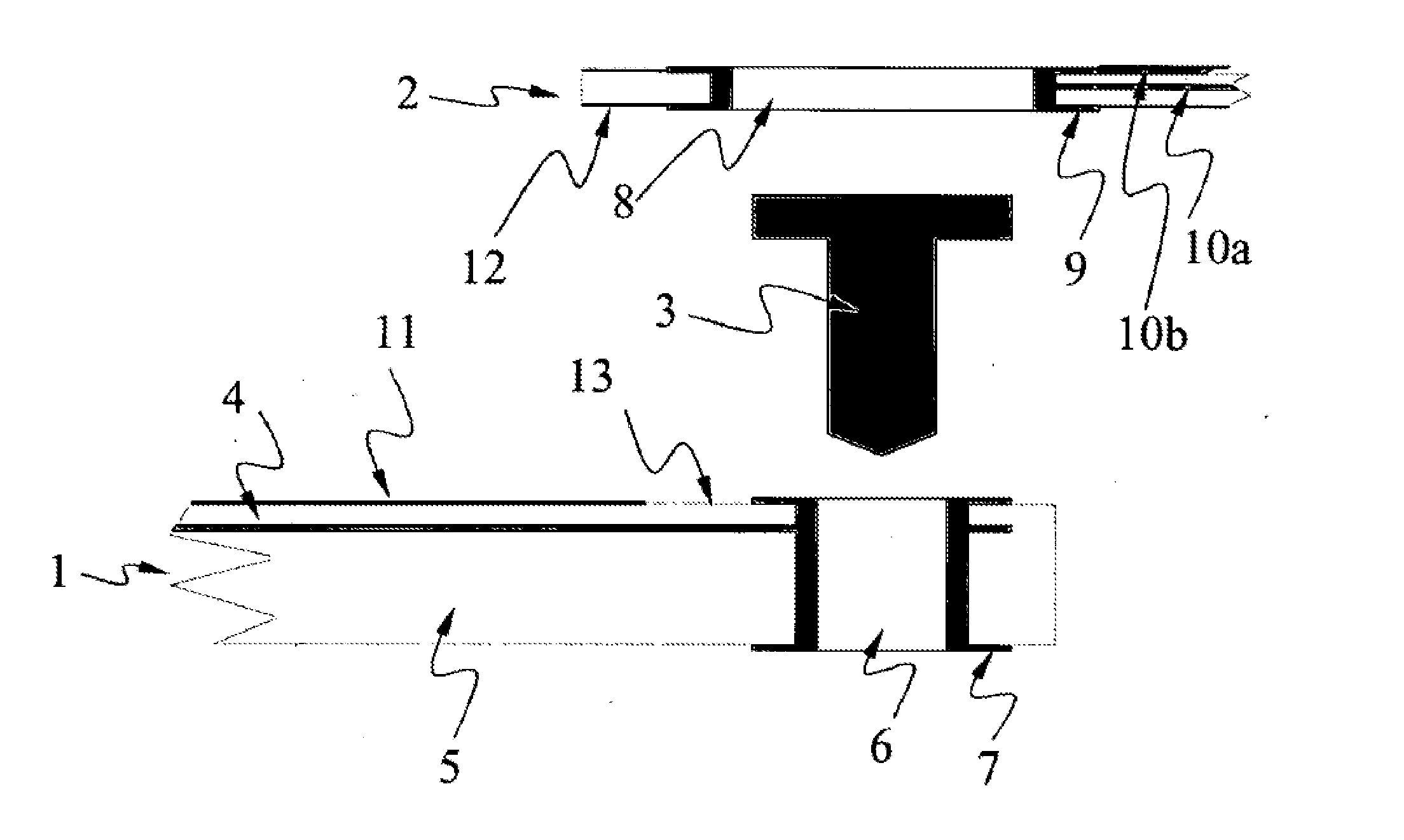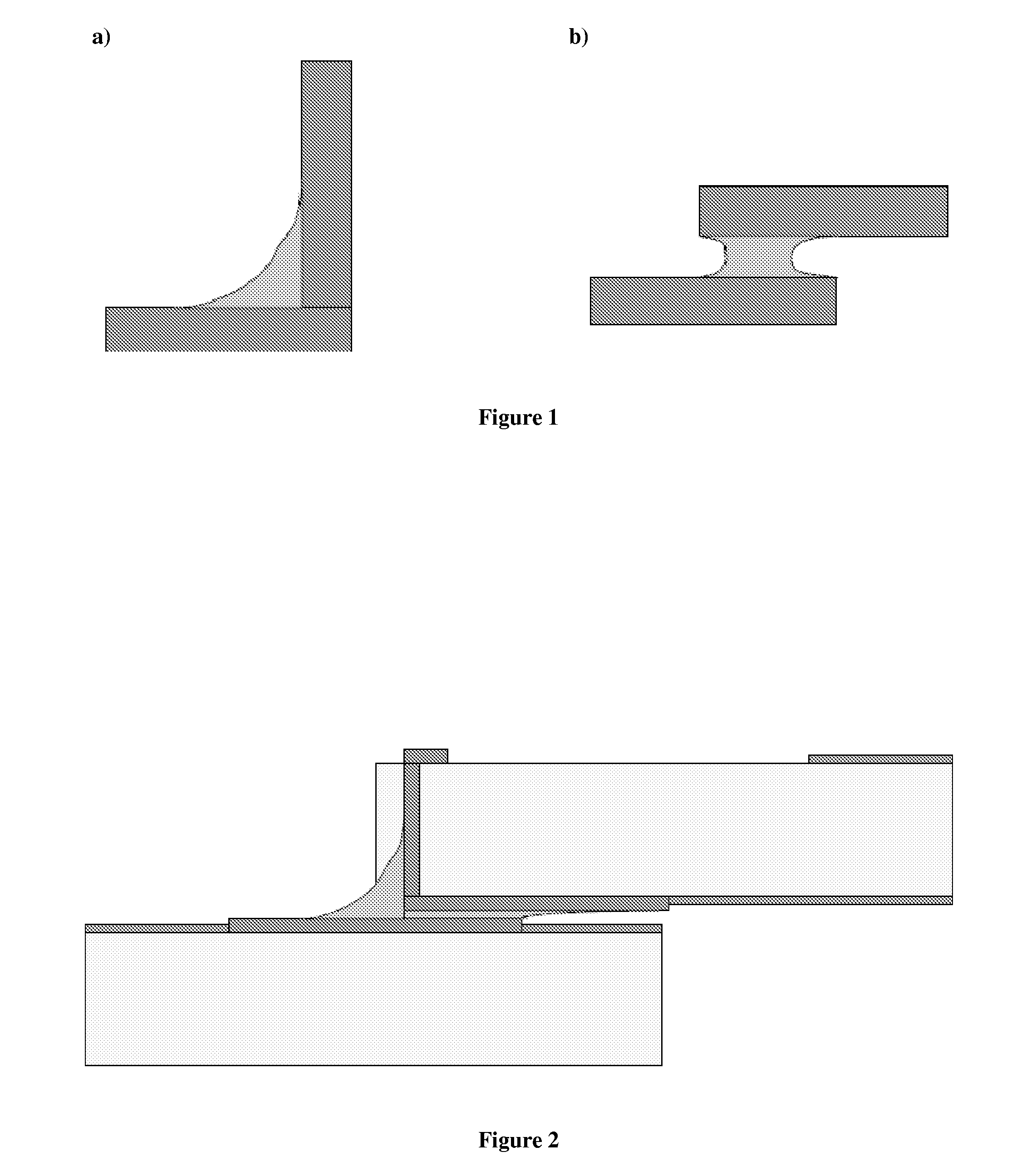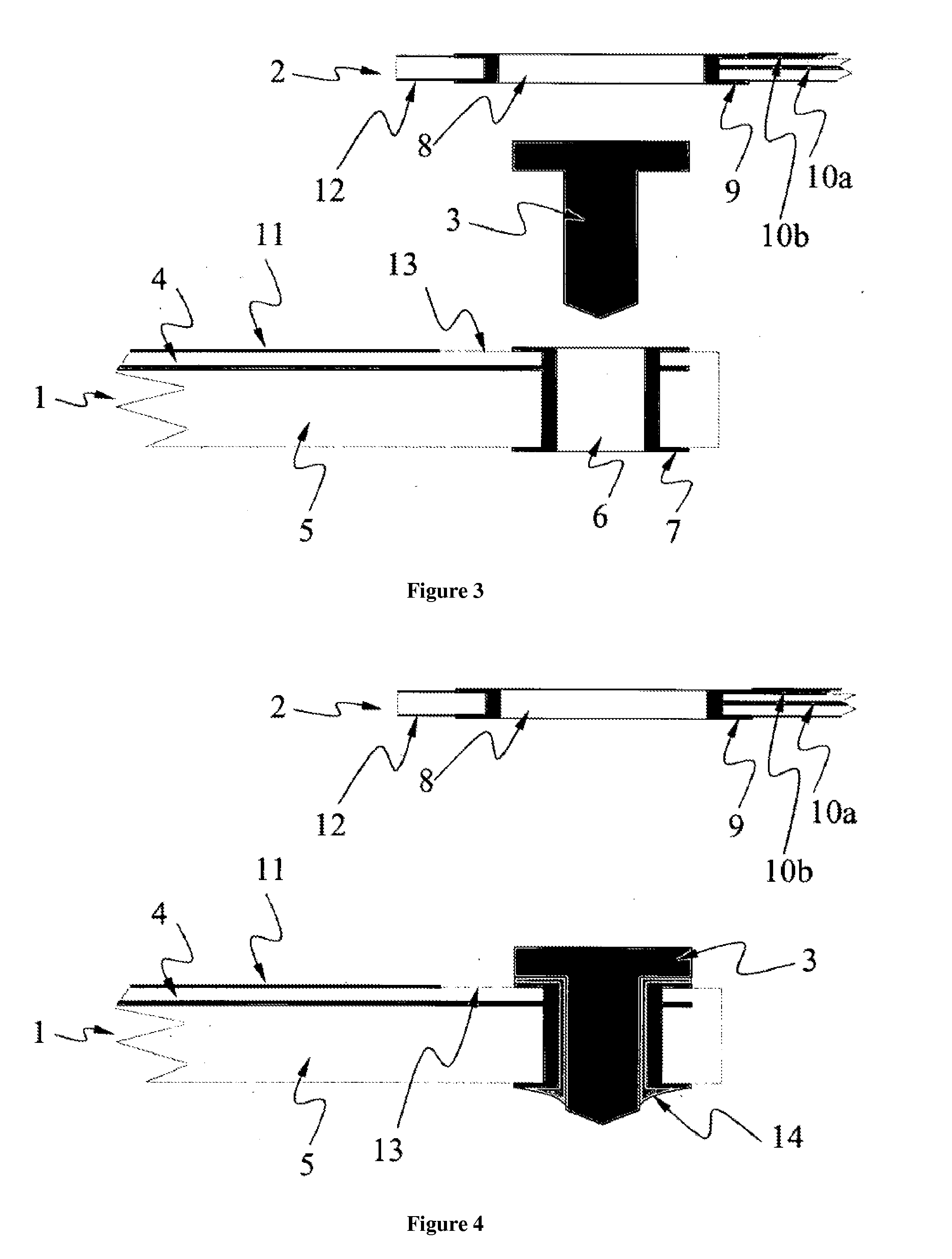Termination apparatus and method for planar components on printed circuit boards
- Summary
- Abstract
- Description
- Claims
- Application Information
AI Technical Summary
Benefits of technology
Problems solved by technology
Method used
Image
Examples
first embodiment
Connecting a Winding PCB to a Main PCB
[0019]Refer to FIG. 3, which shows a winding PCB (1) (possibly of a so-called multi-layer construction), a main PCB (2) (also possibly of a so-called multi-layer construction), and a terminal pin (3). The terminal pin (3) is shown as having a “mushroom” shape, but in practice is not required to have this shape to be effective. Additionally, the terminal pin (3) is made from a solderable material; for example, copper or copper alloy.
[0020]Both the winding PCB (1) and the main PCB (2) are manufactured using established methods well-known in the industry. Each of these PCBs consists of insulating material (5), with representative copper traces (4 and 10a) embedded inside the PCB or located on the surface of the PCB (10b).
[0021]Applied on both surfaces of each PCB are so-called solder-mask layers (11 and 12). However, the solder-mask material is notably absent from the area (13) surrounding the conductive annular male ring (7) on PCB (1) around the ...
second embodiment
An Interconnected Set of PCBs With Terminations That Employ Termination Pins
[0029]This embodiment employs an interconnected set of printed circuit boards (PCBs), having a first PCB and a second PCB, said first and second PCBs configured with components needing electrical or flux coupling with components on the other of said first and second PCBs, each said PCB being constructed from insulating and non-insulating materials with conducting traces embedded inside or located on the surface of each said PCB, said PCBs coupled by at least one termination point, each said termination point comprising: a male conductive annular ring seated in said first PCB, wherein said male conductive annular ring contains a plated-through hole, and wherein the termination mating area of said first PCB immediately surrounding said male conductive annular ring is not covered with solder-mask material; a female conductive annular ring seated in said second PCB, said female conductive annular ring containing...
third embodiment
Method for Creating an Interconnected Set of PCBs With Terminations That Employ Termination Pins
[0036]This embodiment discloses a method for interconnecting a set of printed circuit boards (PCBs), having a first PCB and a second PCB, said first and second PCBs configured with components needing electrical or flux coupling with components on the other of said first and second PCBs, each said PCB being constructed from insulating and non-insulating materials with conducting traces embedded inside or located on the surface of each said PCB, said PCBs coupled by at least one termination point, each said termination point being made by the method comprising the steps of: providing a male conductive annular ring seated in said first PCB, wherein said male conductive annular ring contains a plated-through hole, and wherein the termination mating area of said first PCB immediately surrounding said male conductive annular ring is not covered with solder-mask material; providing a female cond...
PUM
| Property | Measurement | Unit |
|---|---|---|
| Thickness | aaaaa | aaaaa |
| Shape | aaaaa | aaaaa |
| Electrical conductor | aaaaa | aaaaa |
Abstract
Description
Claims
Application Information
 Login to View More
Login to View More - R&D
- Intellectual Property
- Life Sciences
- Materials
- Tech Scout
- Unparalleled Data Quality
- Higher Quality Content
- 60% Fewer Hallucinations
Browse by: Latest US Patents, China's latest patents, Technical Efficacy Thesaurus, Application Domain, Technology Topic, Popular Technical Reports.
© 2025 PatSnap. All rights reserved.Legal|Privacy policy|Modern Slavery Act Transparency Statement|Sitemap|About US| Contact US: help@patsnap.com



